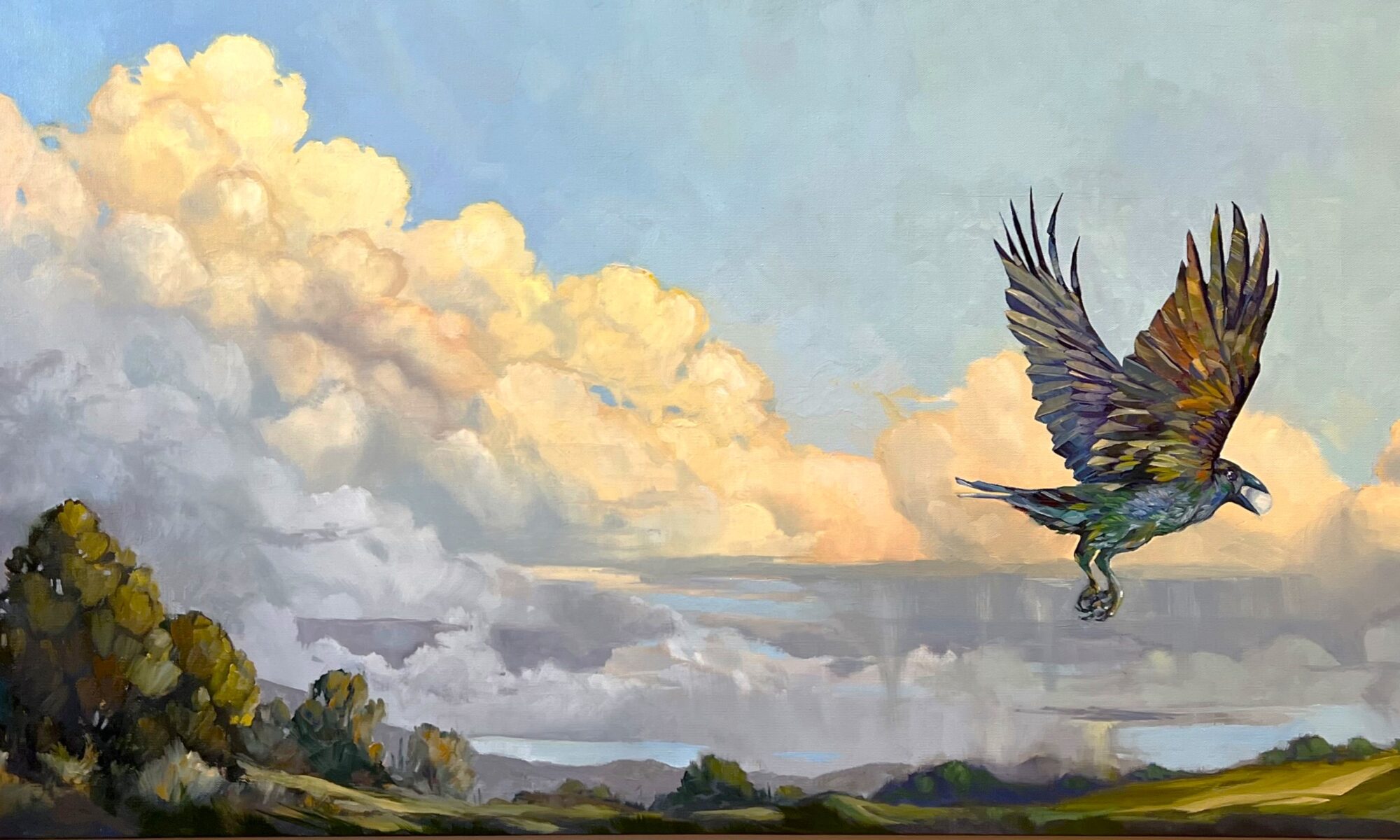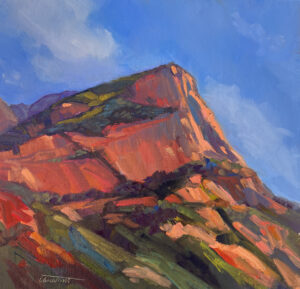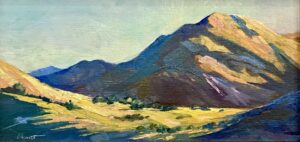Arizona artist Casey Cheuvront has no flies on her when it comes to selling her work. She kindly agreed to answer some questions:
How long have you had gallery representation?
If you are counting co-ops or vanity galleries, about 6 years. This has been a game of musical chairs for me, with some being seasonal and some going out of business. Others I left because I did not like the fit. Currently I am in the Sedona Arts Center Fine Art Gallery and Legends of the West, Santa Fe. I hope to be in both for some time to come. I was in a local co-op but the service commitment, the gallery rules, the lack of traffic and other factors made me feel it was not a good fit for me.
How have you sought gallery representation? Have they approached you? Cold calling on your part? Through an event?
Yes, yes, and yes. One gallery responded to a congratulations I sent by inviting me to submit. Another invited me after a couple of plein air events; they’ve been a strong seller for me since. A third solicited me. I cold-called a fourth on the recommendation of another artist friend showing there; so far, no dice.
What do you think makes for a good gallerist?
A combination of open-mindedness, discretion, strong curation skills, sales skills, marketing skills, professionalism (that is crucial) and knowing her market.
What do you look for in your own paintings when you pitch them?
First, is it a good painting? Would I hang it in my home? Is it my best effort? Could it be better? Is it nicely presented (framing etc.)? Is it priced reasonably? (I don’t mean cheap; I mean, is the pricing in keeping with my other works and what’s currently showing there.) Is it in keeping with the overall style already in the gallery? Does it ‘fit’? e.g. I would not offer seascapes in Sedona or Santa Fe; and I probably wouldn’t try to sell cactus landscapes in Maine!
What does your presentation packet look like?
Everything I have is digital. I used to have a folder full of expensively-photographed, 4×6 or 5×7 prints, but that ship has sailed. I have a website which I work hard to keep current, a decent bio, a list of accomplishments (shows, awards, judging, workshops, demos, etc.) and of course I keep a file of recent available works which I can send out or put on a thumb drive quickly. “Go digital or go home” is the thing these days. I also always keep business cards with me (you never know) even when painting in the field.
How do you massage your social-media presence to support your galleries?
I have a strong following on Facebook, a lesser one on Instagram. If I have, say, a featured-artist showing or something I of course promote that through social media. When I send a piece to a gallery, I’ll share that. I keep my gallery list current on the website and send newsletter announcements periodically.
Do you ever pull the plug on galleries? If so, why?
I have done that four times. In one case it was bad communication on the owners’ part, and being treated as a second-class citizen by her store personnel. In another case a co-op owner simply could not deliver the goods; the gallery was mismanaged from day one, promises were not kept, and though I admired her presentation I found the execution sorely lacking. A local art league had a gallery and while I sold OK there, one artist treated the establishment as her personal gallery. No one else was allowed to work or demo while she was there, which made the mandatory work days a real drag. The last co-op I left because I felt it was just not a good fit; while a couple of artists had pricing like mine, I noticed big, inexpensive, bright/splashy pieces selling (including one I pulled when I left) and thought they would do better with another artist in that space. I’m happy to report they are doing ok, have expanded their space, and have a huge roster of artists there.
Co-op/vanity galleries make rent on selling wall space, so they tend to be really crowded, and often there’s no real oversight on who’s in and who’s not as long as they have a checkbook. Certainly, that’s not true everywhere, and there are some great co-ops around. I have a friend who’s been in one in Northern California for many years and sells a bundle; she’s shared some of the work there and it’s all top notch.
I’d rather be the new kid in a great gallery and hang with people who are really good, than the best in town in a gallery showing moderate-to-mediocre work.
Reserve your spot now for a workshop in 2025:
- Advanced Plein Air Painting, Rockport, ME, July 7-11, 2025.
- Sea and Sky at Acadia National Park, August 3-8, 2025.
- Find Your Authentic Voice in Plein Air, Berkshires, MA, August 11-15, 2025.
- Immersive In-Person Fall Workshop, Rockport, ME, October 6-10, 2025.





